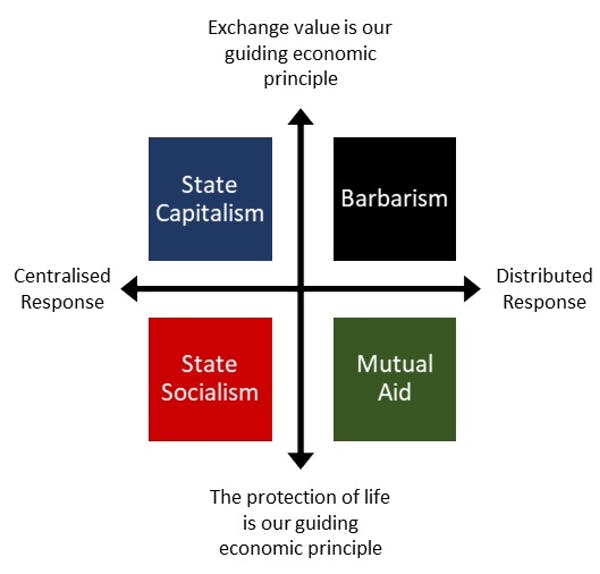“A strong, democratic state that mobilises resources to build a stronger health system, prioritises protecting the vulnerable from the whims of the market and responds to and enables citizens to form mutual aid groups rather than working meaningless jobs.”
.
We need to be looking beyond the current crisis.
The Science Festival, the Town Council, the VGS and other groups are trying to do this – with a Café Scientifique event today focussing on the issues these groups should consider and possible ways to address them:
Clean Growth for Sidmouth 2020
.
There are many issues to look at
These include whether we are willing to trade public health for greater surveillance and intrusion into our private lives:
Looking to the model for beating the coronavirus
.
The main focus of today’s talk was about how we could make the Sid Valley a more sustainable place to live and work – with a particular look at local food production, transport and the high street. More of this in a later post.
.
Meanwhile, here is a consideration of where we might be headed longer-term from Simon Mair writing in The Conversation – which gives context for any local solutions:
.
What will the world be like after coronavirus? Four possible futures
There are a number of possible futures, all dependent on how governments and society respond to coronavirus and its economic aftermath. Hopefully we will use this crisis to rebuild, produce something better and more humane. But we may slide into something worse.
I think we can understand our situation – and what might lie in our future – by looking at the political economy of other crises. My research focuses on the fundamentals of the modern economy: global supply chains, wages, and productivity. I look at the way that economic dynamics contribute to challenges like climate change and low levels of mental and physical health among workers. I have argued that we need a very different kind of economics if we are to build socially just and ecologically sound futures. In the face of COVID-19, this has never been more obvious…
From an economic perspective, there are four possible futures: a descent into barbarism, a robust state capitalism, a radical state socialism, and a transformation into a big society built on mutual aid. Versions of all of these futures are perfectly possible, if not equally desirable…
What is the economy for?
The key to understanding responses to COVID-19 is the question of what the economy is for. Currently, the primary aim of the global economy is to facilitate exchanges of money. This is what economists call “exchange value”… jobs in many critical services aren’t those that tend to be highest valued in society. Many of the best paid jobs only exist to facilitate exchanges; to make money. They serve no wider purpose to society: they are what the anthropologist David Graeber calls “bullshit jobs”.
Pointless jobs
The fact that so many people work pointless jobs is partly why we are so ill prepared to respond to COVID-19. The pandemic is highlighting that many jobs are not essential, yet we lack sufficient key workers to respond when things go bad…
Our economic imaginations
There has been a broad economic consensus for 40 years. This has limited the ability of politicians and their advisers to see cracks in the system, or imagine alternatives…
Four futures
To help us visit the future, I’m going to use a technique from the field of futures studies. You take two factors you think will be important in driving the future, and you imagine what will happen under different combinations of those factors.
The factors I want to take are value and centralisation. Value refers to whatever is the guiding principle of our economy. Do we use our resources to maximise exchanges and money, or do we use them to maximise life? Centralisation refers to the ways that things are organised, either by of lots of small units or by one big commanding force. We can organise these factors into a grid, which can then be populated with scenarios. So we can think about what might happen if we try to respond to the coronavirus with the four extreme combinations:

Hope and fear
These visions are extreme scenarios, caricatures, and likely to bleed into one another. My fear is the descent from state capitalism into barbarism. My hope is a blend of state socialism and mutual aid: a strong, democratic state that mobilises resources to build a stronger health system, prioritises protecting the vulnerable from the whims of the market and responds to and enables citizens to form mutual aid groups rather than working meaningless jobs.
What will the world be like after coronavirus? Four possible futures | theconversation.com